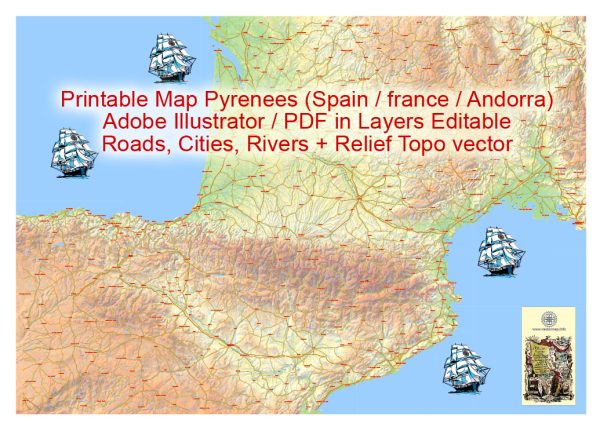The Pyrenees is a stunning and diverse mountain range that stretches approximately 430 kilometers (267 miles) along the border between France and Spain. This natural wonder is known for its remarkable beauty, rich biodiversity, and a wide range of landscapes. Here is a description of the Pyrenees’ nature:
- Mountainous Terrain: The Pyrenees are characterized by their rugged and mountainous terrain, with many peaks reaching heights of over 3,000 meters (9,800 feet). These high summits are covered in snow and ice, especially during the winter, creating a breathtaking alpine landscape.
- Forests: The lower slopes of the Pyrenees are heavily forested, with a mix of deciduous and coniferous trees. Beech, oak, and pine trees are common in these forests. They provide habitat for a variety of wildlife, including deer, boar, and numerous bird species.
- Lakes and Rivers: The Pyrenees are adorned with numerous lakes and rivers, making it a haven for aquatic life. Lakes like Lac d’Oô and Estany de Sant Maurici are known for their crystal-clear waters and scenic surroundings. These bodies of water are often surrounded by lush vegetation.
- Alpine Meadows: Higher up in the mountains, you’ll find alpine meadows bursting with colorful wildflowers during the summer months. These meadows are an important part of the ecosystem, supporting a range of insects, birds, and small mammals.
- Glaciers: Despite their relatively modest size compared to other mountain ranges, the Pyrenees are home to several glaciers. These frozen rivers of ice can be found at higher elevations, and they are vital for the region’s hydrology.
- Wildlife: The Pyrenees are home to a diverse array of wildlife. You might encounter chamois, marmots, foxes, and various bird species, including eagles and vultures. The Pyrenean brown bear is also one of the most iconic species in the region, although it is critically endangered.
- Caves: The Pyrenees feature a network of caves, some of which are famous for their stunning stalactites and stalagmites. Many of these caves have been important archaeological and paleontological sites, revealing the region’s ancient history.
- Biodiversity: The Pyrenees are known for their rich biodiversity, with a mix of Mediterranean and alpine flora and fauna. The range supports an abundance of plant and animal species, and the area is home to several nature reserves and national parks dedicated to preserving this unique environment.
- Hiking and Recreation: The Pyrenees are a popular destination for outdoor enthusiasts. The region offers excellent opportunities for hiking, mountain biking, skiing, and other recreational activities, allowing visitors to immerse themselves in the natural beauty of the area.
In summary, the Pyrenees offer a captivating blend of mountains, forests, lakes, and wildlife. Whether you’re an avid nature enthusiast or simply seeking a scenic retreat, the Pyrenees provide a spectacular natural environment to explore and appreciate.


 Author: Kirill Shrayber, Ph.D.
Author: Kirill Shrayber, Ph.D.